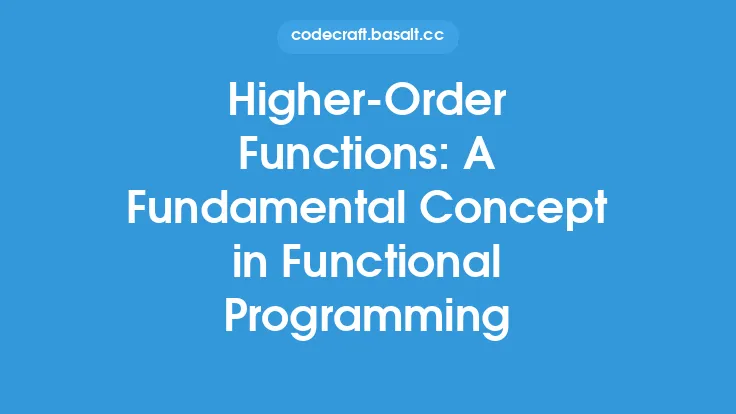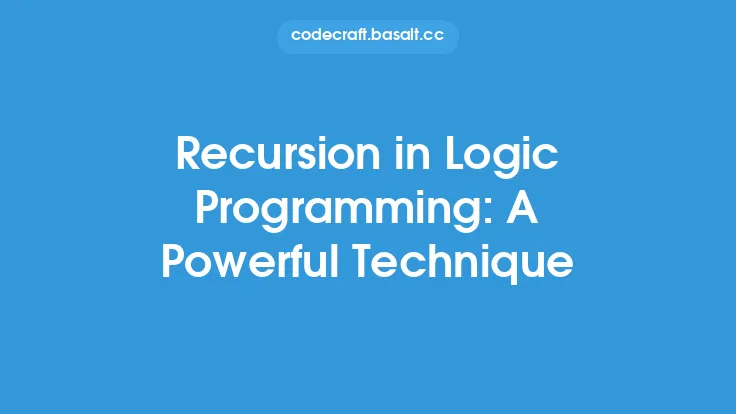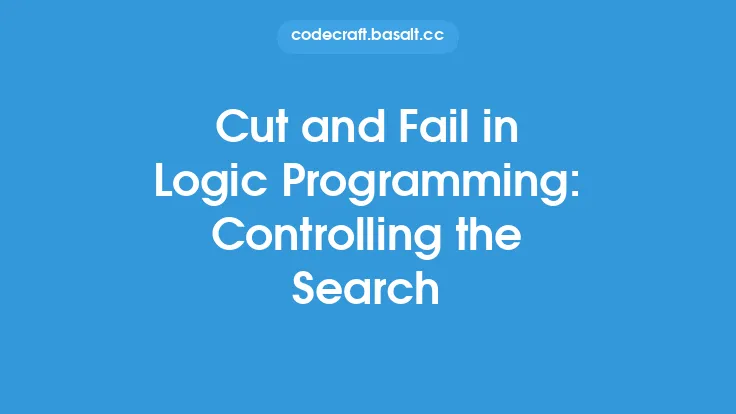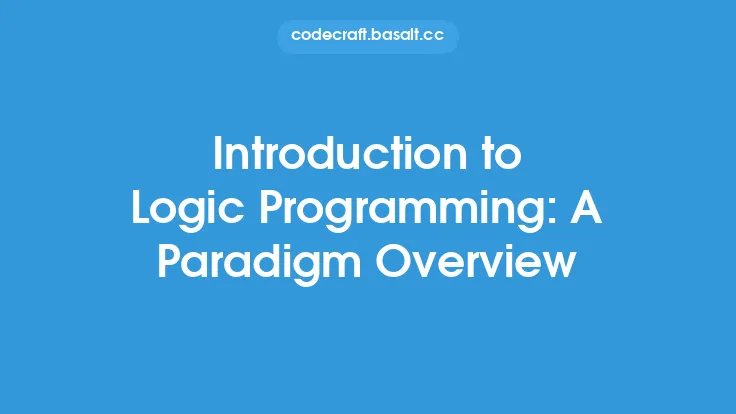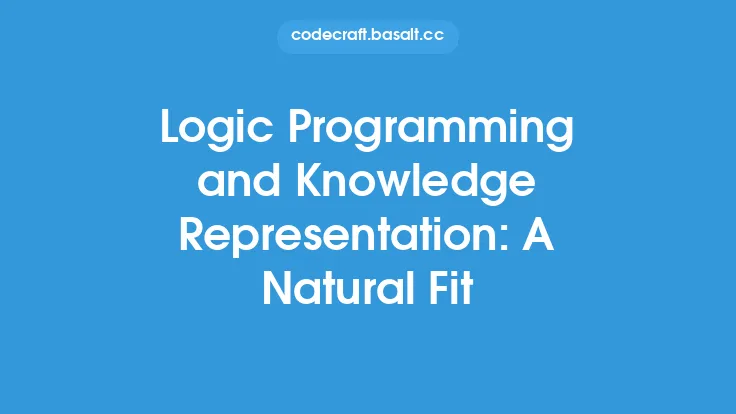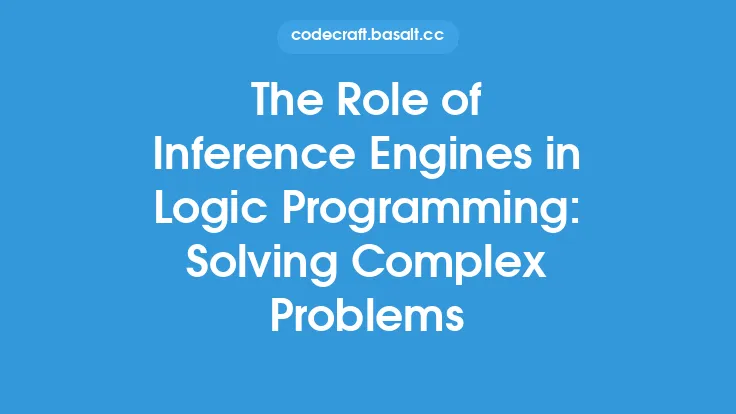Logic programming is a programming paradigm that is based on formal logic, and one of the fundamental concepts in this paradigm is unification. Unification is the process of finding a substitution that makes two terms equal, and it is a crucial component of the logic programming language Prolog. In this article, we will delve into the concept of unification in logic programming, exploring its definition, types, and applications.
Introduction to Unification
Unification is a process that takes two terms as input and returns a substitution that makes the two terms equal. A term in logic programming is a symbol, a variable, or a compound term, which is a function symbol applied to a sequence of terms. For example, `f(a, b)` is a compound term, where `f` is the function symbol and `a` and `b` are the arguments. A substitution is a mapping from variables to terms, and it is used to replace the variables in a term with other terms.
Types of Unification
There are two main types of unification: syntactic unification and semantic unification. Syntactic unification is the process of finding a substitution that makes two terms equal based on their syntactic structure. For example, the terms `f(a, b)` and `f(x, y)` can be unified by substituting `x` with `a` and `y` with `b`. Semantic unification, on the other hand, takes into account the meaning of the terms and the relationships between them. For example, the terms `father(john, mary)` and `parent(x, y)` can be unified by substituting `x` with `john` and `y` with `mary`, based on the semantic relationship between the `father` and `parent` predicates.
Unification Algorithms
There are several unification algorithms that have been developed, including the Martelli-Montanari algorithm and the Robinson algorithm. The Martelli-Montanari algorithm is a popular algorithm for syntactic unification, and it works by recursively applying a set of rules to the terms until a substitution is found or it is determined that the terms cannot be unified. The Robinson algorithm, on the other hand, is a more general algorithm that can handle both syntactic and semantic unification.
Applications of Unification
Unification has a wide range of applications in logic programming, including query evaluation, rule-based systems, and expert systems. In query evaluation, unification is used to match the query with the rules in the knowledge base, and to find the substitutions that satisfy the query. In rule-based systems, unification is used to match the rules with the facts in the knowledge base, and to find the substitutions that satisfy the rules. In expert systems, unification is used to match the rules with the input data, and to find the substitutions that satisfy the rules.
Unification and Logic Programming Languages
Unification is a fundamental component of logic programming languages, including Prolog. In Prolog, unification is used to match the goals with the rules in the knowledge base, and to find the substitutions that satisfy the goals. Prolog also provides a built-in predicate called `unify` that can be used to unify two terms. Other logic programming languages, such as Mercury and ECLiPSe, also provide unification as a built-in feature.
Conclusion
In conclusion, unification is a fundamental concept in logic programming that has a wide range of applications. It is a crucial component of the logic programming language Prolog, and it is used in query evaluation, rule-based systems, and expert systems. The different types of unification, including syntactic and semantic unification, and the various unification algorithms, including the Martelli-Montanari algorithm and the Robinson algorithm, provide a solid foundation for understanding this concept. As logic programming continues to evolve, the importance of unification will only continue to grow, and it will remain a vital component of this programming paradigm.
